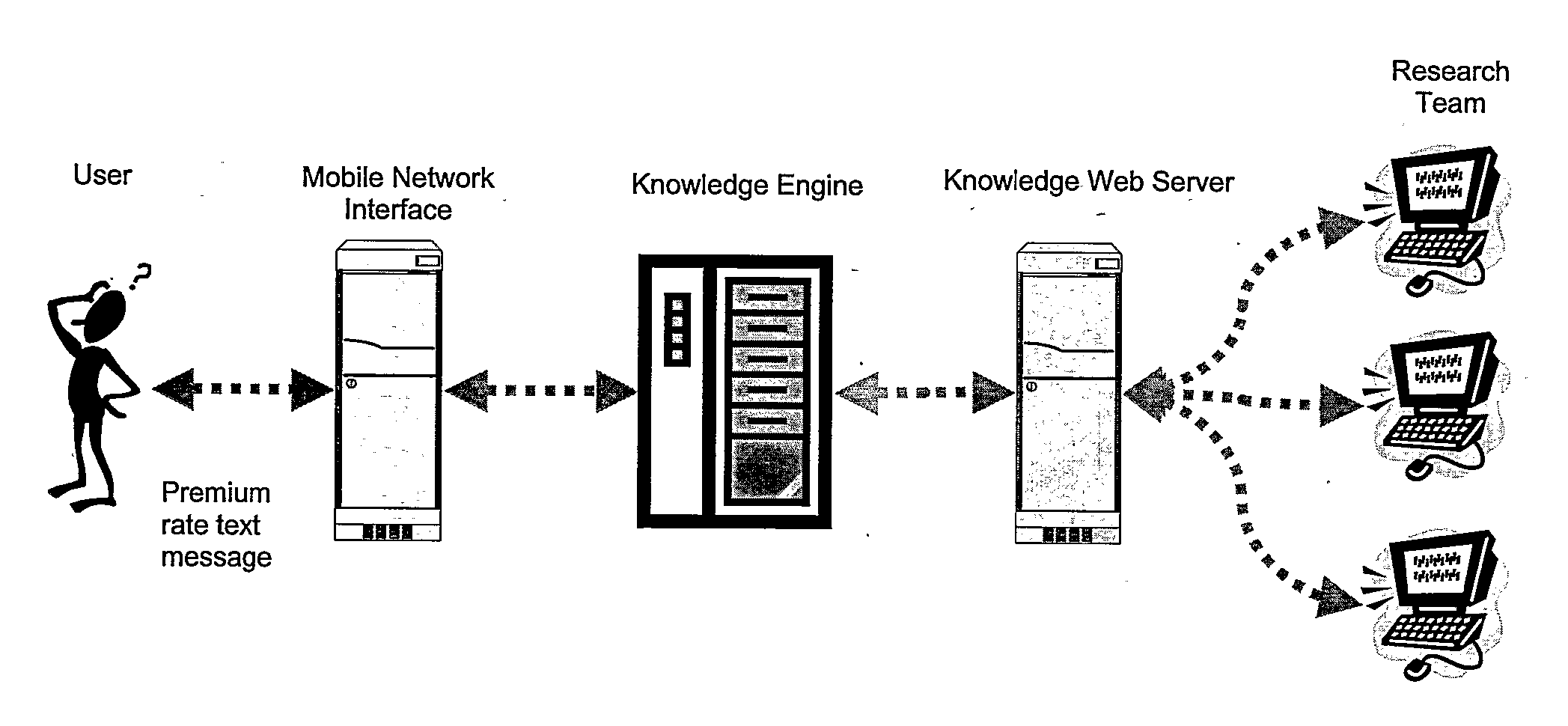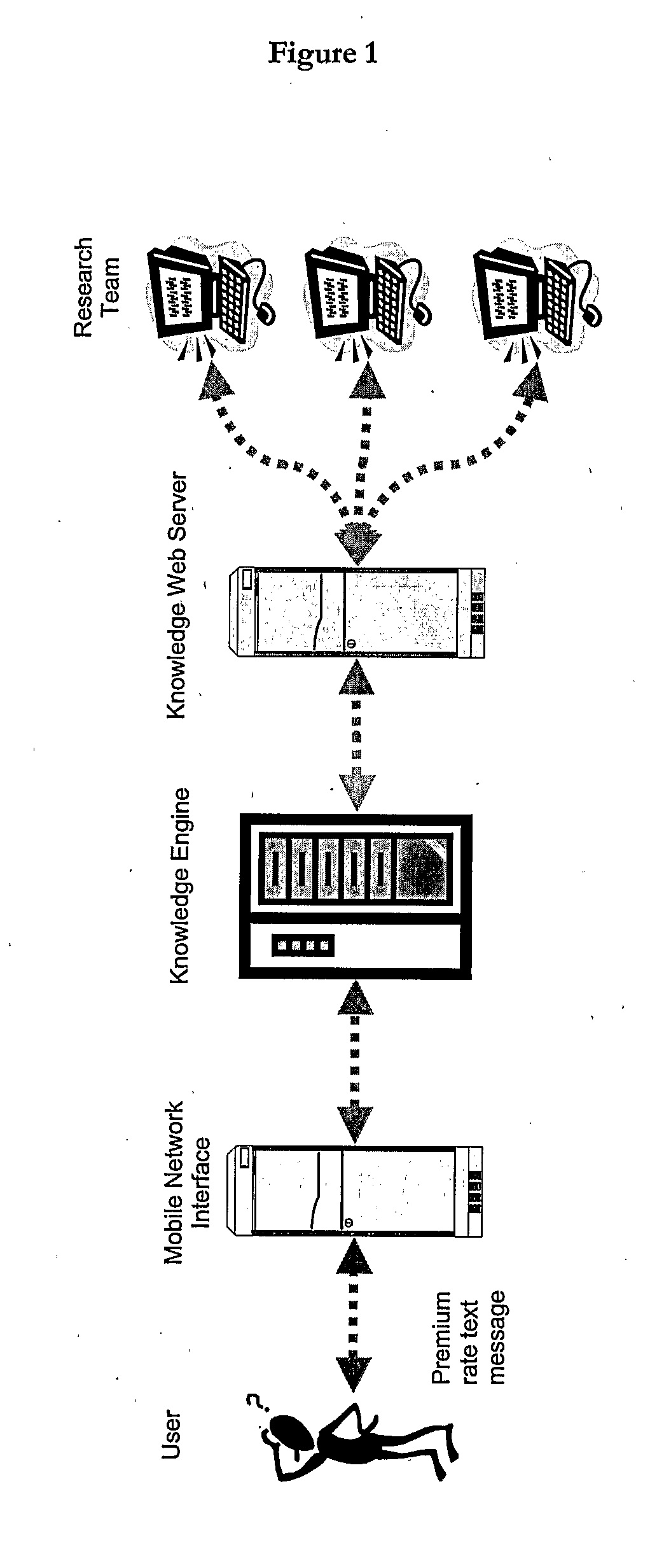Method for Processing Questions Sent From a Mobile Telephone
a mobile telephone and question processing technology, applied in the field of mobile telephone question processing, can solve the problems of user frustration, further exacerbate the poor performance of the current system, and users will still have problems, so as to simplify the technical infrastructure, and eliminate the need for costly billing systems
- Summary
- Abstract
- Description
- Claims
- Application Information
AI Technical Summary
Benefits of technology
Problems solved by technology
Method used
Image
Examples
Embodiment Construction
Overview
[0018] In an implementation, consumers will be able to send in any question to the AQA service, via a premium rate text message on their mobile phone. Within minutes, AQA will send a text response to the consumer. Given that it is a text service, all responses will (with current SMS constraints) be no more than 160 characters in length. There is, currently in the UK, a simple £1 charge for consumers, plus their network charges associated with sending their text message (which may vary from network to network), for this service. AQA is able to provide these responses though a combination of an intelligent knowledge engine and a select team of paid researchers. The service will give an answer for any question presented in any way to the service. A mobile phone user can either submit a question via a £1 premium text message or by a £1.50 premium voice call. In either case the answer is sent back to the questioner via a free text message.
[0019] AQA handles questions at a firs...
PUM
 Login to View More
Login to View More Abstract
Description
Claims
Application Information
 Login to View More
Login to View More - R&D
- Intellectual Property
- Life Sciences
- Materials
- Tech Scout
- Unparalleled Data Quality
- Higher Quality Content
- 60% Fewer Hallucinations
Browse by: Latest US Patents, China's latest patents, Technical Efficacy Thesaurus, Application Domain, Technology Topic, Popular Technical Reports.
© 2025 PatSnap. All rights reserved.Legal|Privacy policy|Modern Slavery Act Transparency Statement|Sitemap|About US| Contact US: help@patsnap.com


